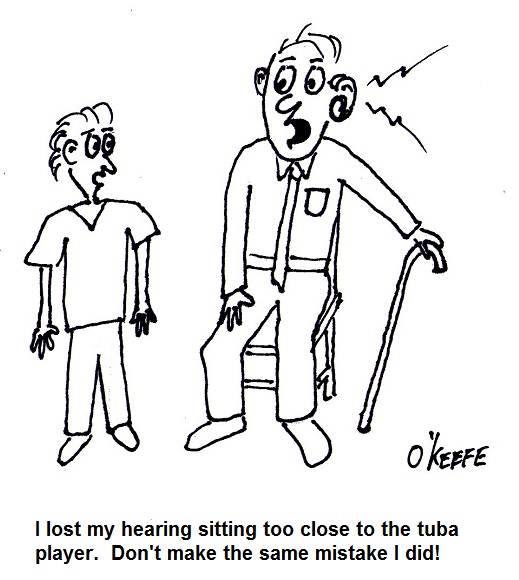| Hearing is one of our most valued senses. It, along with sight, is how we acquire most of the information available to us in our environment. But have you ever considered what sound actually is, or how it is perceived?
Sound, at its simplest, is a series of pressure waves traveling through a medium, whether that medium be a solid, liquid, or gas. Now let’s focus for a moment on the medium we’re most familiar with, which, unless you live underwater, is air. The last time you turned on the radio, I’ll bet you didn’t consider what makes it possible to hear sound coming from that box. How does that magical fete happen? Well, turning the knob on the box results in the amplification of electrical impulses produced by incoming radio waves broadcast from the radio station. These impulses power the speakers, causing them to vibrate. The vibrating speakers in turn create pressure waves in the surrounding air, and those waves will travel until they crash into an obstruction, such as the workings of your inner ear. At this point the magnificent human body comes into play, skin, bones, and fluid working together to convert the action of the pressure waves from your radio’s speakers into nerve impulses which find their way to your brain via your nervous system. Your brain interprets these nerve impulses and perceives them as music. If sound pressure waves are strong enough, they can crash against the workings of our inner ear and create damage. Damaging pressure waves can be created by things like sitting too close to the massive speakers at a rock concert, or a jet’s engine, as well as by many types of machinery present in a factory. In most cases hearing can be preserved by wearing appropriate protection, coupled with limiting the amount of time you are exposed to the loud source of sound. Both of these factors are important, as we’ll discuss later. Thankfully, there is high-tech equipment capable of determining whether sound pressure waves are capable of inflicting damage on our delicate organs, equipment which compares the source’s measured sound pressure to the sound pressure associated with the threshold of human hearing. By threshold, I mean the sound pressure at which our ear begins to perceive sound, which was determined by scientists to be 0.00002 Newtons per square meter, or N/m2. The Newton is a unit of measurement within the metric system used to quantify force, much as pounds quantify units of force/weight within the English system, and since pressure is force divided by area, we’ll be dealing with units expressed in N/m2. The sound pressure measurement is then converted to a sound pressure level, expressed in units of decibels, or dB, according to this formula: Lp = 20 × Log(p ÷ p0) where Lp is the sound pressure level in dB, p is the measured sound pressure, and as discussed previously, the threshold sound pressure, p0, equals 0.00002 N/m2. If you will remember from previous blog discussions, Log, a standard function on most calculators, is used to scale down the sound pressure level numbers, which tend to be quite large, into smaller, more evenly spaced numbers, making them easier to plot on a graph. Okay, so suppose you want to determine if a piece of factory equipment is dangerously noisy to those working around it. Using a sound level meter you would first measure its sound pressure, p, to be 20 N/m2. Applied to the formula given above, we calculate the sound pressure level to be: Lp = 20 × Log(20 N/m2 ÷ 0.00002 N/m2) = 120 dB Now bear in mind that 20 N/m2 is the level at which most people’s ears will start to hurt. Prolonged exposure at this level can cause damage to the ears and hearing loss. Depending on your exposure time to a sound source, even much lower sound pressure levels can lead to hearing loss. So how do we know where we’re at safety-wise with sound pressure levels and exposure times? Next week, we’ll find out when we look at exposure standards set up by the Occupational Health and Safety Administration (OSHA). _____________________________________________ |
Tags: dB, decibels, engineering expert witness, forensic engineer, hearing loss, machinery noise, sound level, sound measurement, sound pressure, sound proofing, sound waves





I stumbled upon your website site on the internet and checked a couple of your earlier blogposts. Continue to keep up the terrific work. I also added your Rss to my MSN News Reader. Looking forward to reading more from you at a later point!…
Thanks, Robert. I am glad you like my work.